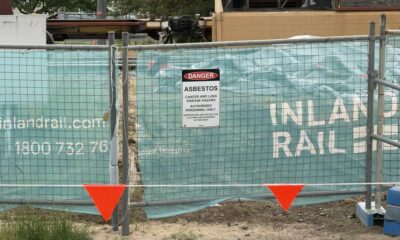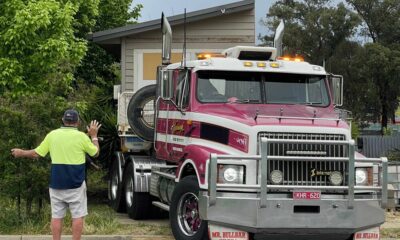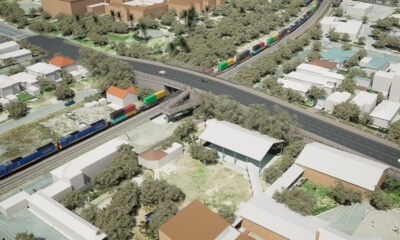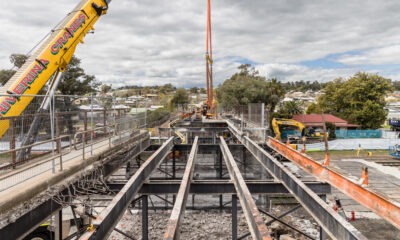Local
Inside Inland Rail’s new workers village at Stockinbingal
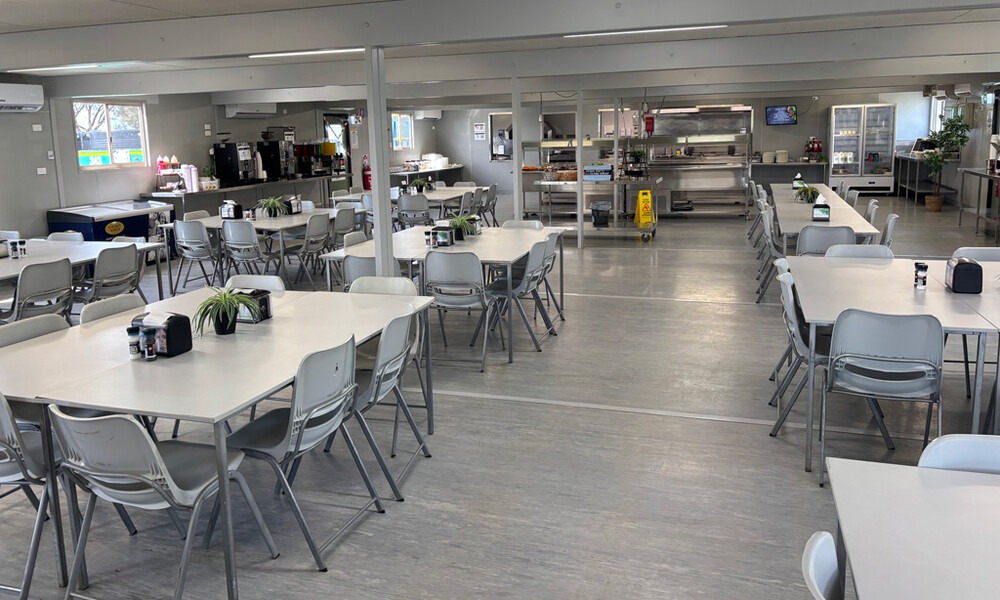
A SPRAWLING new accommodation facility just outside Stockinbingal is nearing completion, with more than 260 beds already installed and construction crews now calling it home as work ramps up on the next stage of the Inland Rail project.
Located on Grogan Road, about two kilometres north of Stockinbingal township, the 7.7-hectare site will eventually house up to 350 workers over the next two years as they deliver the 39-kilometre Illabo to Stockinbingal section of track.
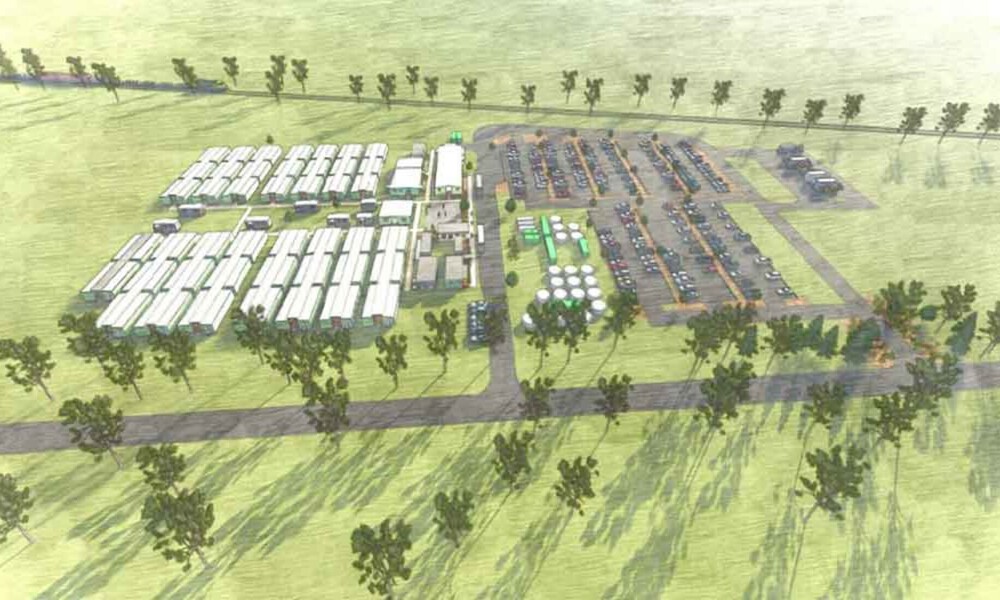
Illustration of the accommodation camp at Stockinbingal | Image: Supplied/Inland Rail
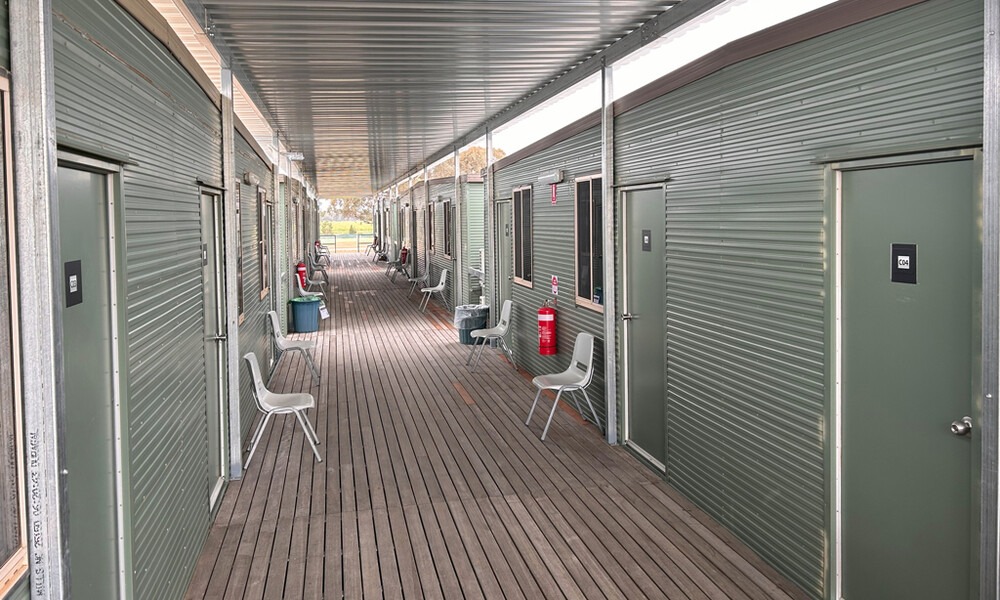
The completed facility | Photo: Supplied/Inland Rail
Designed to reduce pressure on local housing availability, rental markets, and property prices, the temporary village will serve as a fully self-contained hub for the Inland Rail workforce, offering modern facilities and comforts to support a long-term regional workforce.
The camp features private ensuite rooms, a central dining hall serving freshly prepared meals, a gymnasium, a recreation room, laundry facilities, a convenience store, ample car parking, and landscaped surroundings to promote comfort and liveability.
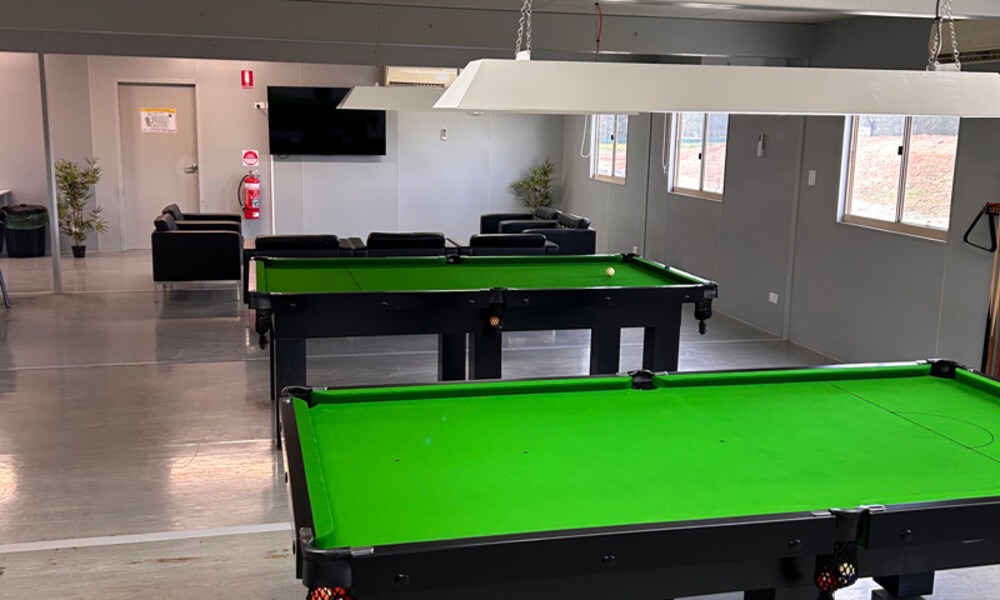
The facility has a dedicated pool room, making it feel like a “home away from home” | Photo: Supplied/Inland Rail
It has been designed to provide workers with a “home away from home,” supporting wellbeing during extended stays away from family and community.
At present, around 60 workers are already residing on site, with full construction of the camp expected to be complete by the end of the month.
Inland Rail has confirmed that the remainder of the beds and infrastructure will be operational within weeks.
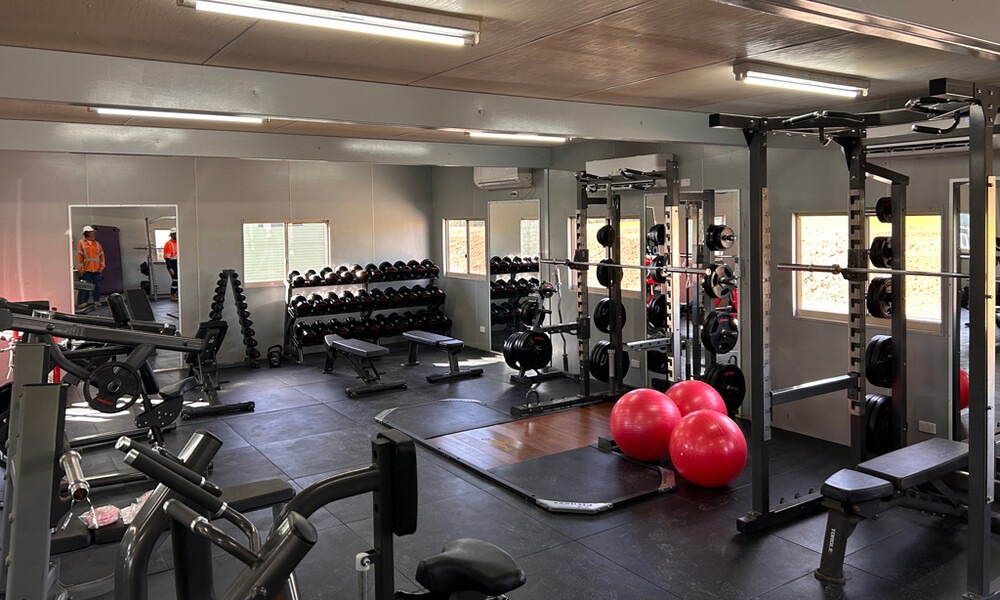
The facility’s gymnasium | Photo: Supplied/Inland Rail
Inland Rail Project Director for the Illabo to Stockinbingal section, Conrad Strachan, said the camp plays a critical role in ensuring the success of the project while minimising disruption to the broader community.
“The temporary accommodation facility is a vital part of supporting our workforce on the Illabo to Stockinbingal section and ensuring they have a home away from home while delivering this important infrastructure project,” Mr Strachan said.
“We’re proud to be working closely with the Stockinbingal community and contributing to the local economy. Around 60 workers are already staying on site, enjoying freshly prepared meals and engaging with the local community.
“We are looking forward to being part of the Stockinbingal community as we work towards delivery of the Illabo to Stockinbingal section.”
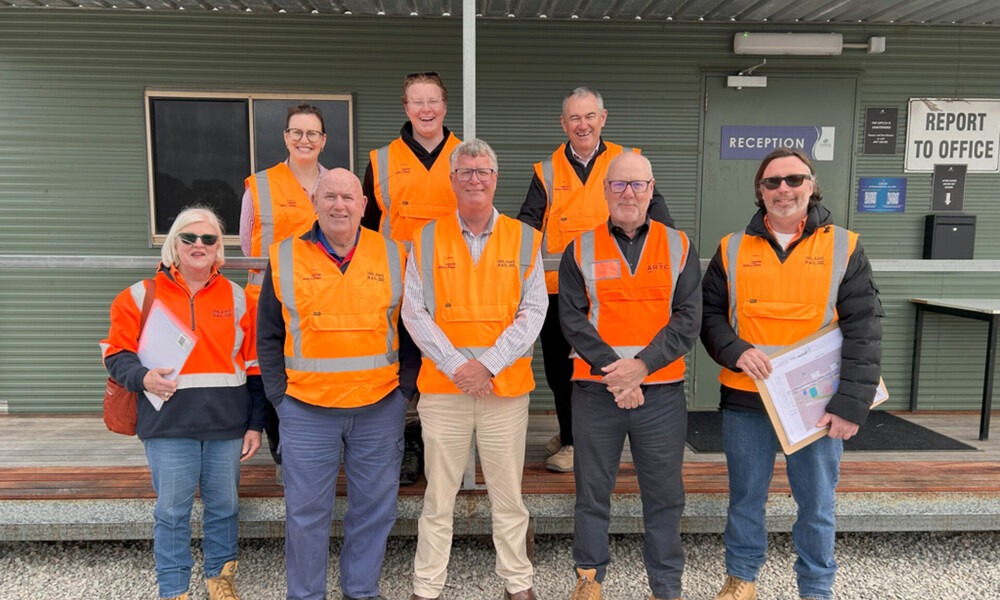
Inland Rail and John Holland representatives hosted Cootamundra-Gundagai Councillors on a tour of the accommodation facility | Photo: Supplied/Inland Rail
Councillors from Cootamundra-Gundagai Regional Council were recently invited to tour the facility, accompanied by representatives from Inland Rail and construction contractor John Holland.
The delegation was given a guided walkthrough of the newly operational amenities, including the camp kitchen, laundry and gym.
Mayor Abb McAlister said Councillors Kelly, Cooper and Collins, along with Interim General Manager Roger Bailey, were impressed with the quality of the site and the scale of investment in local infrastructure.
Cr McAlister said they described the facility as “state-of-the-art” for its type and a promising sign for the region.
Mr Bailey said he believed the camp would bring numerous benefits to the Cootamundra-Gundagai LGA, noting that the presence of workers and contractors in the area would create new economic and engagement opportunities during the two-year construction window.
Rail construction continues near Stockinbingal
Meanwhile, major civil works are continuing along the alignment as part of the broader Illabo to Stockinbingal upgrade, with staged construction efforts progressing in recent weeks.
During a recent scheduled possession of the track — a period where rail traffic is halted for infrastructure works — John Holland crews successfully rebuilt over 830 metres of old rail formation and replaced three under-track utility crossings along the Main Southern Railway line.
The works involved the complete removal of degraded infrastructure, including 830 metres of old rail and 900 timber sleepers.
Around 10,000 tonnes of compromised formation were excavated before being replaced with 5,000 tonnes of new capping material and 3,500 tonnes of ballast.
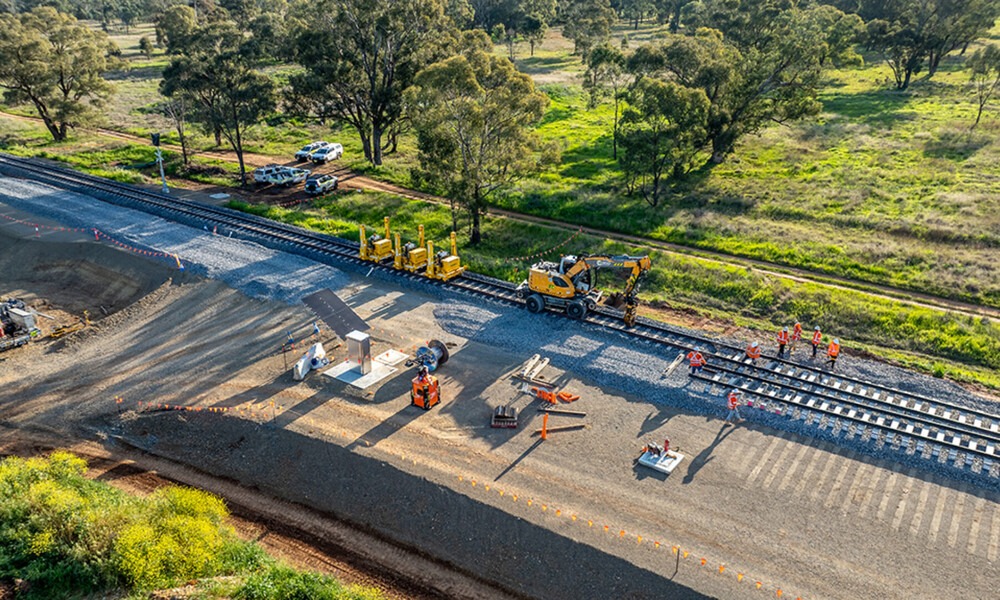
Photo: Supplied/Inland Rail
The new rail and sleepers were then installed, with the section successfully returned to full service after completion.
These works form part of the early phases of delivering Inland Rail’s new double-stacked freight corridor, which will ultimately enable higher-capacity trains to move goods more efficiently between Melbourne and Brisbane.
The Stockinbingal facility, combined with ongoing construction and community engagement, marks another key milestone in Inland Rail’s journey through the Riverina.
Inland Rail says it remains committed to regular consultation with communities across the route and is working closely with local governments, residents, and businesses to ensure economic opportunities and impacts are carefully managed throughout construction.
What is Inland Rail?
Inland Rail is a 1,600km fast freight rail line, now under construction, that will link Melbourne and Brisbane via regional Victoria, New South Wales and Queensland.
The route has been divided into 12 sections, to allow for a staged delivery of the open-access fast freight rail line.
The 39km-long Illabo to Stockinbingal section creates a new direct route from east of Illabo tracking north to Stockinbingal in New South Wales.
The route will bypass the townships of Cootamundra and Bethungra and the winding, steep section of track known as the Bethungra Spiral on the Main South line—opening up a more efficient way to transport freight through the area.
A two-kilometre wide study area has been identified and approved by the Australian Government.




